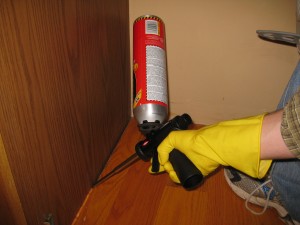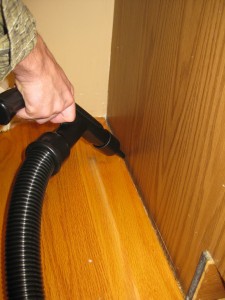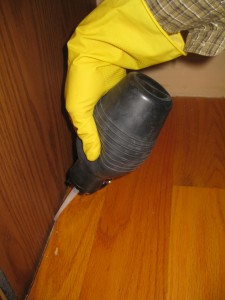IPM crack & crevice control
Closing the door on unwelcome bugs, target area exclusions…
Invasive Pest Solutions™ offers consulting and services for pest-resistant homes and businesses. We help clients use target area crack & crevice closure and other pest haborage control systems. Ask us about our exclusive Seven Zone Defense™ Service-Pack.
Building construction is not an exact science. Homes and businesses, new and old, allow pest insects and weather penetration through cracks and crevices, utility service openings, gaps, garage door and man door seals, window seals, foundation sill and soffit openings, and more. A truly sealed home or business is an illusive goal. Nevertheless, closing cracks and crevices offering pest access to target areas from the outdoors and between rooms and floors inside homes and businesses is an essential prevention practice, important ground-work supporting Integrated Pest Management (IPM).
Interiors of homes and businesses are riddled with voids and openings in and between rooms and along conduits for electricity, heating & cooling, and more. Interior openings are used by pests from tiny ants to mighty mice for harborage and travel under cover.
Your first step for interior pest management is regular sanitation practices. At home, there is no substitute for a clean kitchen and clean food storage areas. Sanitation is equally important in bathrooms and wherever sources of moisture are found.
Your next step is crack and crevice closure, closing the door on unwelcome bugs. Closing cracks and crevices excludes pests from harborage in wall voids and along utility service openings and conduits between rooms. Don’t let the little buggers hide.
Steps for kitchen area crack and crevice closure:
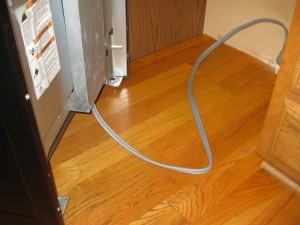
Oven surrounds are common problem areas for pests.
Step one: Move all movable appliances and cabinetry to inspect for cracks and crevices. Determine where cracks and crevices lead, probe and remove loose debris from cracks and crevices.
Step two: HEPA filtration vacuuming. Needle-nozzle, pencil-nozzle, crevice tool and brush attachments are used to thoroughly clean cracks and crevices. HEPA filtration ensures that tiny dust particles, mold spores, and many other tiny organisms are not released into rooms during vacuuming.
Step three: Dusting with diatomaceous earth (DE), a residual mineral dust. We apply small amounts of dust to cracks and crevices penetrating wall voids and utility conduit spaces using bulb or bellows dust applicators. Its mode of action is mechanical dessication of the bugs that crawl through the dust. The only active ingredient in the DE pesticide formulation we use is amorphous silica, the remains of tiny plankton skeletons accumulated long ago in sediments, and mined today for multiple uses. Pesticide grade diatomaceous earth is the only suitable DE formulation for use in pest management. It is processed and formulated to ensure effectiveness for coating surfaces with thin dust accumulations to increase contact with bugs passing through the dust. All pesticides must be used according to label instructions.
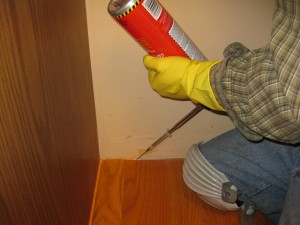
Foam gun with needle nozzel for fine crevices.
Step four: Fill cracks and crevices with low-expansion foam. We use several foam products and other caulks and sealants and reinforcing mesh and fill products to ensure effective closure of cracks, crevices and openings. Every job is a custom job.
Step five: Optional trimming and painting of exposed foam and other sealants to match interior decor.
